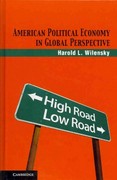Question
macro 1 Problem 44. Which of these statements about bank runs are true? More than one answer is possible. (a) The Fed today tries to
macro 1
Problem 44. Which of these statements about bank runs are true? More than one answer is possible. (a) The Fed today tries to prevent bank runs by attempting to reduce the amount high-powered money. (b) Bank runs are impossible on a bank that holds 100% reserves. (c) Bank runs stopped altogether with the advent of federal deposit insurance (FDIC). (d) Bank runs tend to be isolated and have no effect on overall confidence in the economy. (e) The Fed today tries to bail out certain large banks thought to be "too big to fail." (f) Federal deposit insurance (FDIC) was the first attempt to protect depositors against the consequences of bank runs.
Problem 45. Which of these statements about moral hazard are true? More than one answer is possible. (a) The reckless behavior of some teenagers can be considered a case of moral hazard. (b) The risk-taking of an entrepreneur who has invested his life savings in a project can be considered a case of moral hazard. (c) The Fed bailing out banks deemed "too big to fail" creates a moral hazard. (d) Moral hazard is a type of principal-agent problem. (e) Moral hazard facilitates irresponsible behavior. (f) When economic functions, roles, and duties are determined on a private property basis rather than a socialized basis, moral hazard is more prevalent. (g) Moral hazard entails the consequences of an agent's behavior being partially shared by his principal. (h) Moral hazard occurs when an individual fully suffers the consequences of his actions; thereby, the alleged "morality" of full individual responsibility is hazardous to individual actors having to bear the brunt of it.
Problem 46. Which of these statements about the credit channel are true? More than one correct answer is possible. (a) The credit channel results from higher values of collateral being available for loans. (b) The credit channel has an equal impact on large and small banks. (c) The credit channel occurs when an increase in the interest rate reduces the number of loans that banks provide. (d) The credit channel is a channel by which banks extend credit to one another. (e) The credit channel is a type of credit rationing resulting from monetary policy.
Problem 47. Which of these statements regarding the rule-based and discretion-based approaches to monetary policy are true? More than one correct answer is possible. (a) Imperfect information and policy lags render a discretion-based approach less effective than would have been the case otherwise. (b) A discretion-based policy is designed to be as predictable as possible. (c) A rule-based monetary policy offers greater predictability to agents in the economy. (d) A rule-based monetary policy is more flexible than a discretion-based monetary policy. (e) A discretion-based policy is particularly suited to developing countries, where the central banks have shown that they cannot be trusted with following simple rules.
Problem 47. Which of these statements regarding the rule-based and discretion-based approaches to monetary policy are true? More than one correct answer is possible. (a) Imperfect information and policy lags render a discretion-based approach less effective than would have been the case otherwise. (b) A discretion-based policy is designed to be as predictable as possible. (c) A rule-based monetary policy offers greater predictability to agents in the economy. (d) A rule-based monetary policy is more flexible than a discretion-based monetary policy. (e) A discretion-based policy is particularly suited to developing countries, where the central banks have shown that they cannot be trusted with following simple rules.
Problem 48. Which of these statements about monetary policy targets are true? More than one correct answer is possible. (a) The Federal Reserve Bank of the United States has a dual mandate and works to influence both prices and employment levels. (b) It is possible to target the money supply and interest rates simultaneously. (c) Targeting the money supply always results in less output variability than targeting interest rates.
(d) When the LM curve is the source of fluctuations, then the Fed should target the money supply in order to reduce output variability. (e) When the LM curve is the source of fluctuations, then the Fed should target interest rates in order to reduce output variability. (f) When the IS curve is the source of fluctuations, then the Fed should target interest rates in order to reduce output variability.
Problem 49: Which of these factors can shift the Aggregate Demand (AD) curve? More than one correct answer is possible. (a) Large changes in relative prices. (b) Change in net exports. (c) Decrease in consumption C. (d) Increase in government spending G. (e) New government regulations. (f) Changes in the tax rate. (g) Changes in labor supply. (h) Anything that shifts the IS curve. (i) Discoveries of new natural resources. (j) New technologies. (k) Substantial changes in weather. (l) Anything that shifts the LM curve.
Step by Step Solution
There are 3 Steps involved in it
Step: 1

Get Instant Access to Expert-Tailored Solutions
See step-by-step solutions with expert insights and AI powered tools for academic success
Step: 2

Step: 3

Ace Your Homework with AI
Get the answers you need in no time with our AI-driven, step-by-step assistance
Get Started


